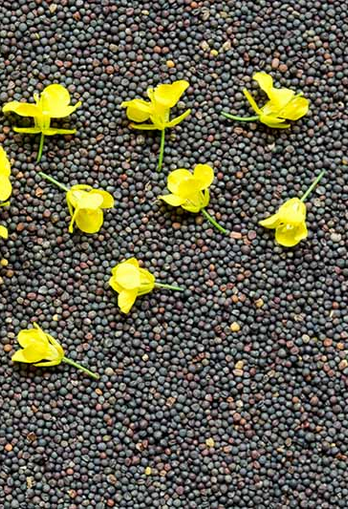 Rapeseed (Brassica napus subsp. napus), also known as oilseed rape, is a bright-yellow flowering member of the family Brassicaceae (mustard or cabbage family), cultivated mainly for its oil-rich seed, which naturally contains appreciable amounts of erucic acid. The term “canola” denotes a group of rapeseed cultivars that were bred to have very low levels of erucic acid and which are especially prized for use as human and animal food. Rapeseed is the third-largest source of vegetable oil and the second-largest source of protein meal in the world.
Rapeseed (Brassica napus subsp. napus), also known as oilseed rape, is a bright-yellow flowering member of the family Brassicaceae (mustard or cabbage family), cultivated mainly for its oil-rich seed, which naturally contains appreciable amounts of erucic acid. The term “canola” denotes a group of rapeseed cultivars that were bred to have very low levels of erucic acid and which are especially prized for use as human and animal food. Rapeseed is the third-largest source of vegetable oil and the second-largest source of protein meal in the world.
Description
Rapeseed flowers are bright yellow and about 17 mm (2⁄3 in) across. They are radial and consist of four petals in a typical cross-form, alternating with four sepals. They have indeterminate racemose flowering starting at the lowest bud and growing upward in the following days. The flowers have two lateral stamens with short filaments, and four median stamens with longer filaments whose anthers split away from the flower’s center upon flowering.
The rapeseed pods are green and elongated siliquae during development that eventually ripen to brown. They grow on pedicels 1 to 3 cm (3⁄8 to 1+3⁄16 in) long, and can range from 5 to 10 cm (2 to 4 in) in length. Each pod has two compartments separated by an inner central wall within which a row of seeds develops. The seeds are round and have a diameter of 1.5 to 3 mm (1⁄16 to 1⁄8 in). They have a reticulate surface texture, and are black and hard at maturity.
Uses
Roasted canola seeds
Roasted canola
Rapeseed is grown for the production of edible vegetable oils, animal feed, and biodiesel. Rapeseed was the third-leading source of vegetable oil in the world in 2000, after soybean and palm oil. It is the world’s second-leading source of protein meal after soybean.






